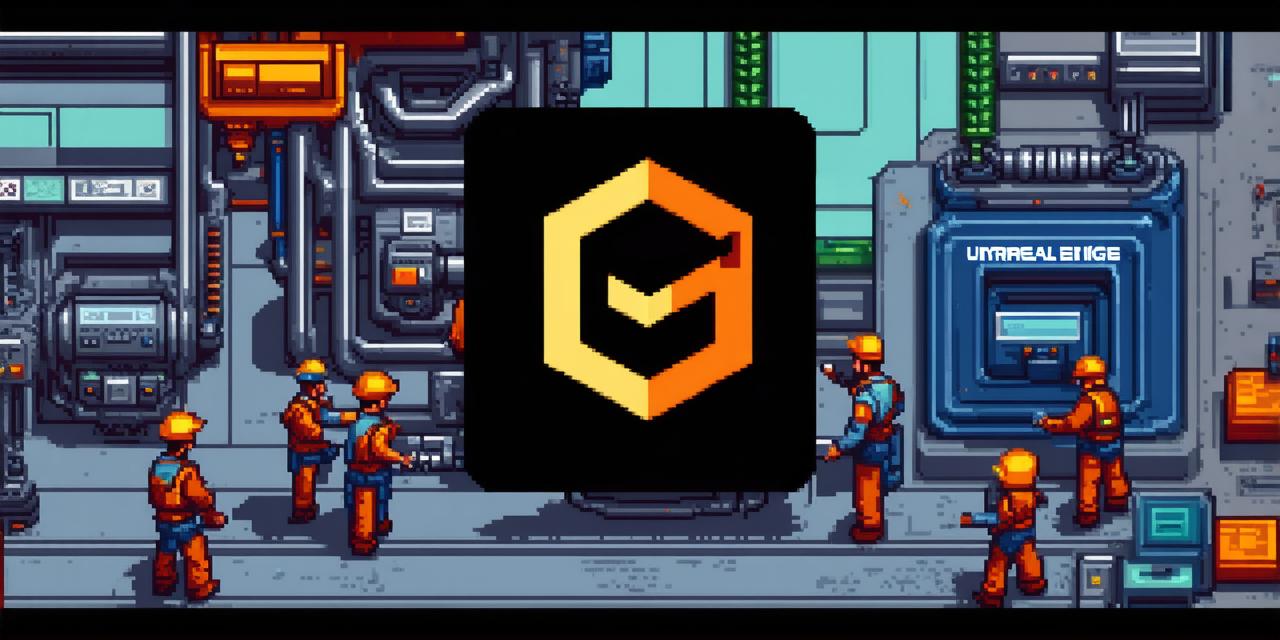Unreal Engine (UE) is primarily known as a powerful tool for creating 3D games. However, it’s not just limited to that. With the right techniques and skills, UE can also be used effectively to create 2D games.
In this article, we will explore how UE can be used to make 2D games, its advantages over other tools, and real-life examples of successful 2D games built using UE.
Unreal Engine for 2D Games: An Overview
UE was first released in 1998 by Epic Games as an advanced tool for creating 3D graphics and animation. However, it quickly gained popularity among game developers due to its flexibility, powerful rendering engine, and support for various programming languages.
Background
In recent years, UE has been used to create some of the most successful games in the industry, including Fortnite and Paragon.
Advantages of Unreal Engine for 2D Games
While UE is primarily known as a tool for 3D games, it has several advantages when it comes to creating 2D games. These include:

- Cross-Platform Compatibility: UE supports multiple platforms, including Windows, Mac, iOS, Android, and consoles like Xbox One and PlayStation 4. This means that the same code can be used to build a game for different platforms with minimal changes, which saves time and effort for developers.
- Advanced Graphics and Animation Capabilities: UE’s graphics engine is designed to handle complex rendering tasks, such as real-time lighting, shadows, and particle effects. This allows developers to create visually stunning 2D games that would be difficult or impossible with other tools.
- Flexible Scripting Language: UE uses its own scripting language called Blueprints, which is a visual programming system that allows developers to create complex game logic without writing code. This makes it easier for non-programmers to work on game development projects and reduces the time and effort required to build a game.
- Large Community of Developers: UE has a large community of developers who contribute to its open-source codebase, creating tools and plugins that extend its functionality. This means that there are many resources available for developers looking to create 2D games with UE, including tutorials, forums, and sample projects.
Real-Life Examples of Successful 2D Games Built Using Unreal Engine
There are many successful 2D games built using Unreal Engine, some of which include:
- Cuphead: Cuphead is a popular indie game developed by Studio MDHR. It was built using UE and features beautiful hand-drawn animation, smooth gameplay, and challenging boss battles.
- Samurai Gaming’s Samurai Showdown: Samurai Gaming’s Samurai Showdown is a mobile 2D fighter game that was developed using UE. It features stunning graphics, fluid combat, and a wide range of characters to choose from.
- Bleeding Edge: Bleeding Edge is a multiplayer melee game developed by Microsoft Studios. It was built using UE and features fast-paced action, colorful characters, and a unique blend of melee and shooter gameplay.
How to Create 2D Games with Unreal Engine
Now that we’ve seen some examples of successful 2D games built using Unreal Engine, let’s look at how to create your own 2D game using this powerful tool.
Setting Up Your Development Environment
Before you start creating your game, you need to set up your development environment. This involves installing UE and setting up your project. To do this, follow these steps:
- Download and install the latest version of UE from the Epic Games Launcher.
- Open UE and create a new project.
- Choose a 2D template for your game and customize it to suit your needs.
- Set up your game’s basic controls, such as moving left and right, jumping, and attacking.
- Create your game’s levels using UE’s built-in level editing tools.
Creating Gameplay Logic
Once you have set up the basics of your game, it’s time to start creating gameplay logic. This involves writing code to handle things like enemy behavior, player movement, and collision detection. To do this, you can use UE’s Blueprints visual scripting system or write code using C++ or other programming languages.
Adding Graphics and Animation
UE has advanced graphics and animation capabilities that allow you to create stunning 2D games with minimal effort. To add graphics and animation to your game, follow these steps:
- Import your game’s assets, such as characters, backgrounds, and particle effects, into UE.
- Use UE’s built-in tools to create animations for your characters, such as walking, running, and jumping animations.
- Add visual effects, such as particle effects and lighting, to enhance your game’s graphics.
Testing and Debugging
Once you have created your game, it’s important to test it thoroughly to ensure that everything is working correctly. UE has built-in testing tools that allow you to run your game on different platforms and identify any bugs or issues.
